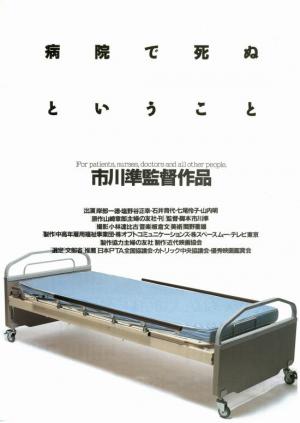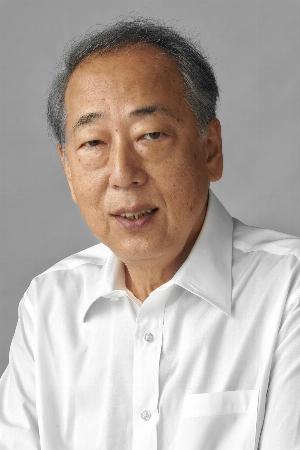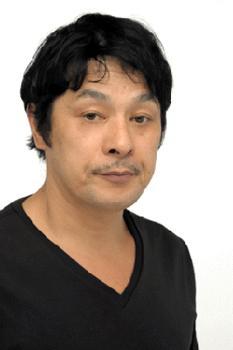Byôin de shinu to iu koto
- Original title
- Byôin de shinu to iu koto
- Year
- 1993
- Running time
- 100 min.
- Country
 Japan
Japan- Director
- Screenwriter
- Jun Ichikawa. Novel: Fumio Yamazaki
- Cast
-
- Music
- Cinematography
- Producer
- Genre
- Drama | Mockumentary. Medical
- Synopsis
- In the early 1990s a spate of hospital films were released in Japan, including Takita Yojiro’s two Let’s Go to the Hospital comedies, Itami Juzo’s drama The Last Dance and Ichikawa Jun’s Dying at a Hospital, shot in a semi-documentary style almost as straightforward as its title. Perhaps these films reflected the greying of Japanese society or, as Ichikawa suggested in an interview, a world afflicted by famine, AIDS and environmental destruction. Working from a book by Yamasaki Fumio, a practicing doctor, Ichikawa follows the progress of five cancer patients from the time they are admitted to the hospital to the end. For much of the film, we are literally standing at the foot of their beds, watching their lives unfold from the middle distance. By making his camera a detached observer, Ichikawa avoids the sentimentality endemic to the hospital genre, while creating a quietly elegiac mood. Instead of wringing tears with close-ups of suffering patients, Ichikawa shows us their illness as part of a larger stream of life. Also, instead of satritizing the Japanese medical establishment, a la Itami, he presents his doctors and nurses as caring professionals who happen to fallible human beings. (Except for the doctor, played by Kishibe Ittoku, all the nurses and other hospital staff are amateurs enacting their real-life roles). There are stories, but no plot. An old couple, both dying of cancer, meet for the last time in the wife’s hospital room. A 40-year-old salaryman complains bitterly that he is not getting better, despite months of treatment, and asks his doctor to tell him the truth. (His doctor, as is still common practice in Japan, has been telling him comforting lies). There are no heroes, no villains. We do, however, see the young salaryman expressing his regret at leaving his three young children - and witness his joy on his last visit home. The hospital scenes are interspersed with montages of ordinary people doing ordinary things: hunting for clams at the seaside, watching a baseball game, dancing at a Bon festival. They are images that express, with a gesture or glance, the beauty and preciousness of life. Ichikawa filmed them over a period of months in various locations around Japan. They are among the best moments in the film. In a voice-over, the doctor says he wants the hospital be a place where patients come to, not die, but live fully to the end. Dying at a Hospital shows us, with a piercing simplicity, exactly what he means. Mark Schilling
- Awards
-
1994: Premios de la Academia Japonesa: nominated to Best Supporting Actor.
- Movie Soulmates' ratings
-
Register so you can access movie recommendations tailored to your movie taste.
- Friends' ratings
-
Register so you can check out ratings by your friends, family members, and like-minded members of the FA community.
Is the synopsis/plot summary missing? Do you want to report a spoiler, error or omission? Please send us a message.
If you are not a registered user please send us an email to [email protected]All copyrighted material (movie posters, DVD covers, stills, trailers) and trademarks belong to their respective producers and/or distributors.
For US ratings information please visit: www.mpaa.org www.filmratings.com www.parentalguide.org

 US
US  Canada
Canada  Mexico
Mexico  Spain
Spain  UK
UK  Ireland
Ireland  Australia
Australia  Argentina
Argentina  Chile
Chile  Colombia
Colombia  Uruguay
Uruguay  Paraguay
Paraguay  Peru
Peru  Ecuador
Ecuador  Venezuela
Venezuela  Costa Rica
Costa Rica  Honduras
Honduras  Guatemala
Guatemala  Bolivia
Bolivia  Dominican Rep.
Dominican Rep. 


